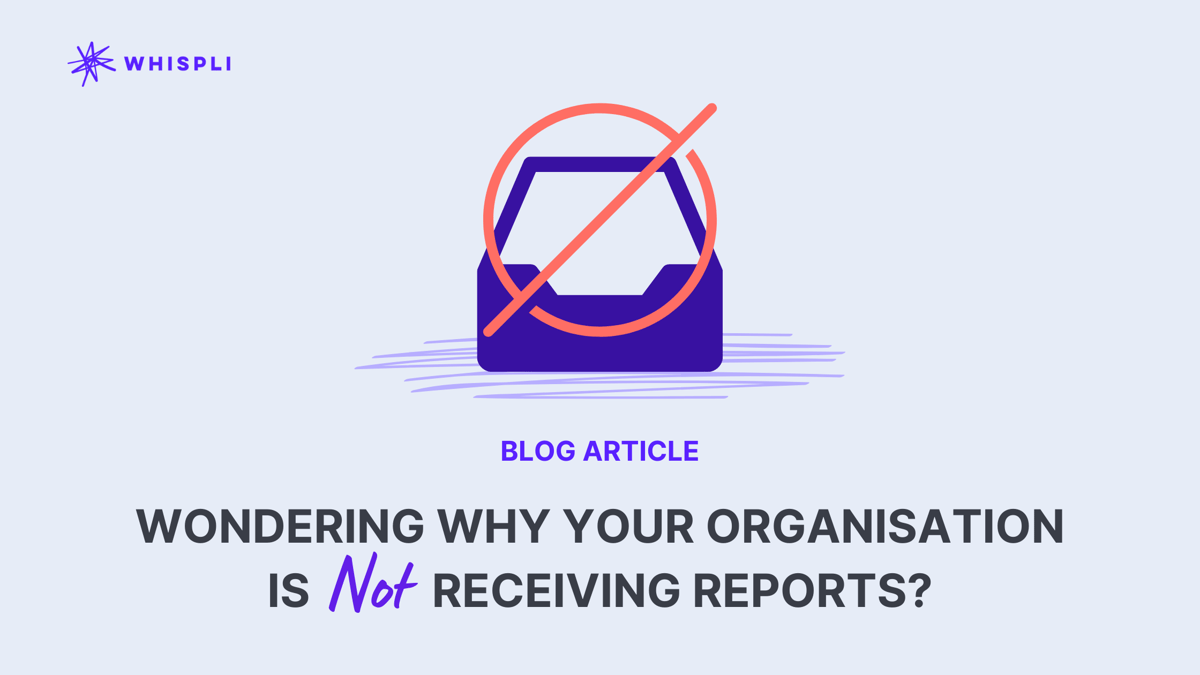Whistleblowing Best Practices,
Whistleblowing Policy
Wondering why your organization is not receiving reports?

In this article, I will explain the key elements to take into consideration to have an effective whistleblowing program and tool within your organisation.
- It is essential to choose the right tool that allows you to comply with legislations in the regions you operate, as well as account for the organization’s needs, policies and culture.
- Initial viewing from the leadership: a fundamental starting point for any effective whistleblowing policy is the understanding and drive of executives and board members to enable employees to raise concerns as well as the sincere commitment at the broader management level to support them in doing so. Whistleblowing programs are more powerful when management have a clear comprehension of the benefits of excellent whistleblowing procedures.
- Having clear procedures. In this point, recommendations differ in regard to the scope of report (types) that should be covered by an internal reporting tool leaning on factors such as industry sector, organisation structure and size, and national & international context. Generally, a solid first step here is a comprehensive, clear and widely disseminated written policy. This is also arguably one of the most crucial steps.
Best practice here is to ensure that you address the following issues:
- Who can make a protected disclosure? Here, an organisation must clearly define the scope of who may use a whistleblowing channel. (Conceptions to consider is whether to extend a whistleblowing channel to third parties or the public, etc)
- What types of reports should be raised? Companies should identify the types of reports which can be raised under this specific platform, channel, ideally with examples.
- How should a report be raised? A policy should specify how to submit a report, whether it must be raised verbally, or via a dedicated hotline or web platform.
- Who should a report be raised with? Related to the issue of how to raise a report, an organisation should specify where or to whom a report should be raised, such as to a line manager, appointed ethics officer, ombudsperson. The procedure for when to contact relevant external bodies, such as regulators, should also be specified. - Promotion, communication and training:
This is another essential point to consider: Raising staff awareness to the existence of internal reporting tools and policies is key to ensuring they are followed. Recommendations to proactively communicate internal reporting procedures to staff include communication and promotion via intranet, promotional leaflets or posters, as well as regular staff training and a session on reporting procedures as part of new staff induction or any online e-learning. - Follow-up procedure when addressing a report: The informant should be kept updated on the progress of the investigation. They should be informed of who (if it is the case in your procedures) their report will be referred to, and the timeline and outcome of the investigation. It may not be easy or appropriate to give a timeline, as such the next step should be a timeline for when they should receive the next update. Ensuring that the whistleblower can contact the designated person handling the report and keeping him or her updated on progress can also help to pre-empt problems and provide reassurance, for example, that the complaint is being addressed and not ignored.
- Culture within your organization
Beyond legal obligations and procedures, in many organisations there is also a significant cultural opposition to informants speaking up that needs to be overcome. It is important to create an environment of reporting wrongdoing through trusted (anonymous) conversations. This will help to reduce any chance of retaliation against these people and further to that, will encourage others to speak up as well..
If you’re looking for more guidance or have some further questions, feel free to reach out to the Whispli team. You can chat or leave us a message on our website.



